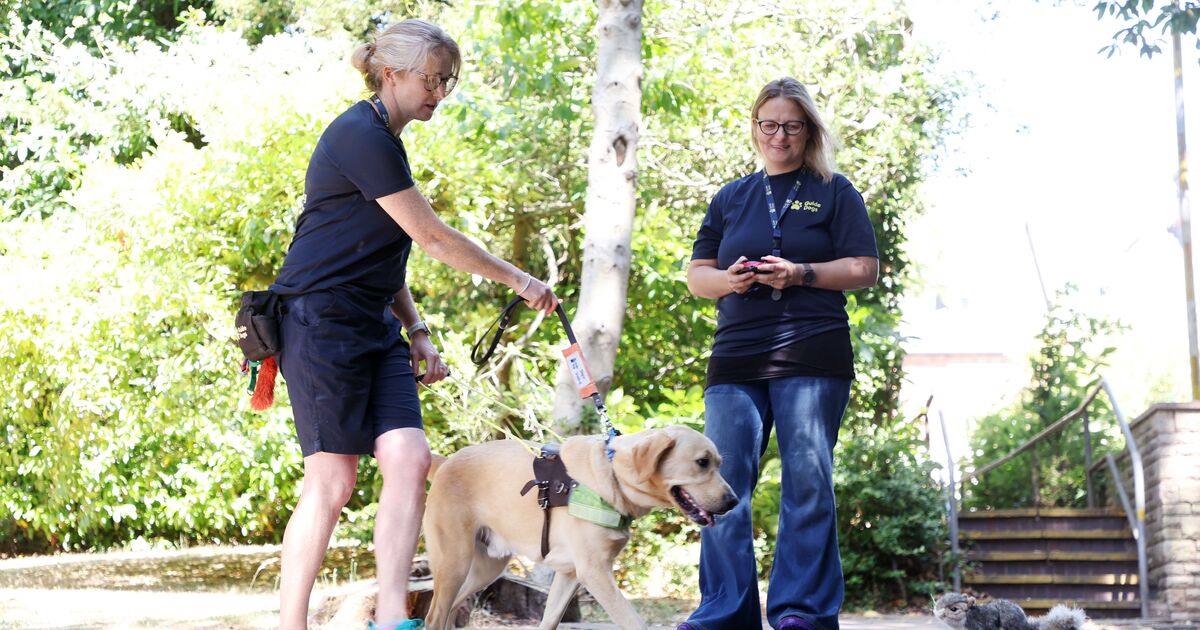Dog owners across the nation are in agreement that their furry friends are ‘easily distracted’. Whether it’s spotting other dogs during walks or reacting to a doorbell, it doesn’t take much for their pets to lose concentration. Typically, four out of ten owners say their dog gets sidetracked when the post arrives, or when a cat walks by.
Only nine per cent said their dog has never ignored a command because it was preoccupied by something else. As a result, while many pet owners admire the discipline displayed by guide dogs two-thirds think their own pets lack the necessary focus to become one.
Karen Brady, a training and behaviour business partner at Guide Dogs – responsible for the study – said: “Taking your dog on a walk is great for both the dog and the owner. But while you can’t eradicate all distractions and make your dog resistant to them all.
“It’s important to know how to regain control and calm your dog down.”
In an innovative approach to training, Guide Dogs use a life-like toy squirrel fastened to a remote-controlled car, which helps the dogs ignore tempting distractions.
It’s suggested that mimicking an everyday situation in a controlled environment can eliminate your dog’s impulse to chase after distractions like a squirrel or car in other environments. For guide dogs, this means they’re able to concentrate on their task.
“Dogs are intelligent beings,” Karen added. “By positively reinforcing specific actions, we can train our dogs to resist the temptation to chase a squirrel up a tree, or other forms of wildlife they might come across whilst out and about.
“It is not really common knowledge that we employ such techniques, so putting a spotlight on our squirrel car helps to broaden the awareness of how we train our dogs and get them ready to perform vital duties as Assistance Dogs.”
KAREN BRADY’S TOP TRAINING TIPS:
Focus on what you do want
Rather than thinking, ‘I want my dog to stop chasing something’, instead, think, ‘I want my dog to act with this specific behaviour’ as the goal. This gives you and your dog something to focus on teaching, like a really good sit action.
Patience makes perfect
Practice does too, but start with small expectations. A dog that has spent a year chasing squirrels isn’t suddenly going to listen to you because you’ve decided to train them. Teach your dog to do the behaviour you want them to do away from all the distractions to begin with.
Train with something your dog really likes
You’re competing with squirrels or cats, so you need something your dog values. That could be some roast chicken, their favourite treats, or a beloved toy. When they get it right, they get their prize.
Break it down
We never start training in the park full of squirrels and we certainly don’t try to teach everything at once. We teach a specific behaviour through reinforcement training, then gradually bring in the distraction.
As training progresses, we’ll combine behaviour and the distraction. Gradually your training drills will go so well that your dog will automatically check in with you, ignore the distraction, sit, or continue guiding to their next kerb or walking politely on lead beside you.
Be kind to yourself
When it goes wrong, take a deep breath and plan for next time. Even the professionals make mistakes, we simply make it easier for the dog next time, and build up to the distraction at a slower rate. Slow and steady builds longer lasting results and resilience than rushing through the process.

